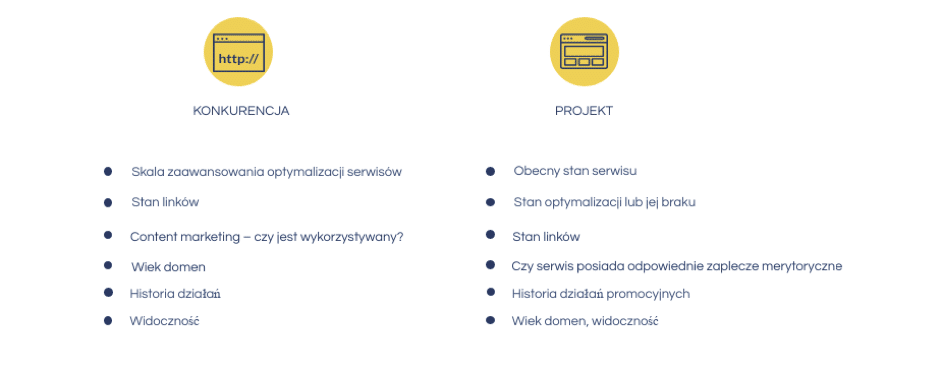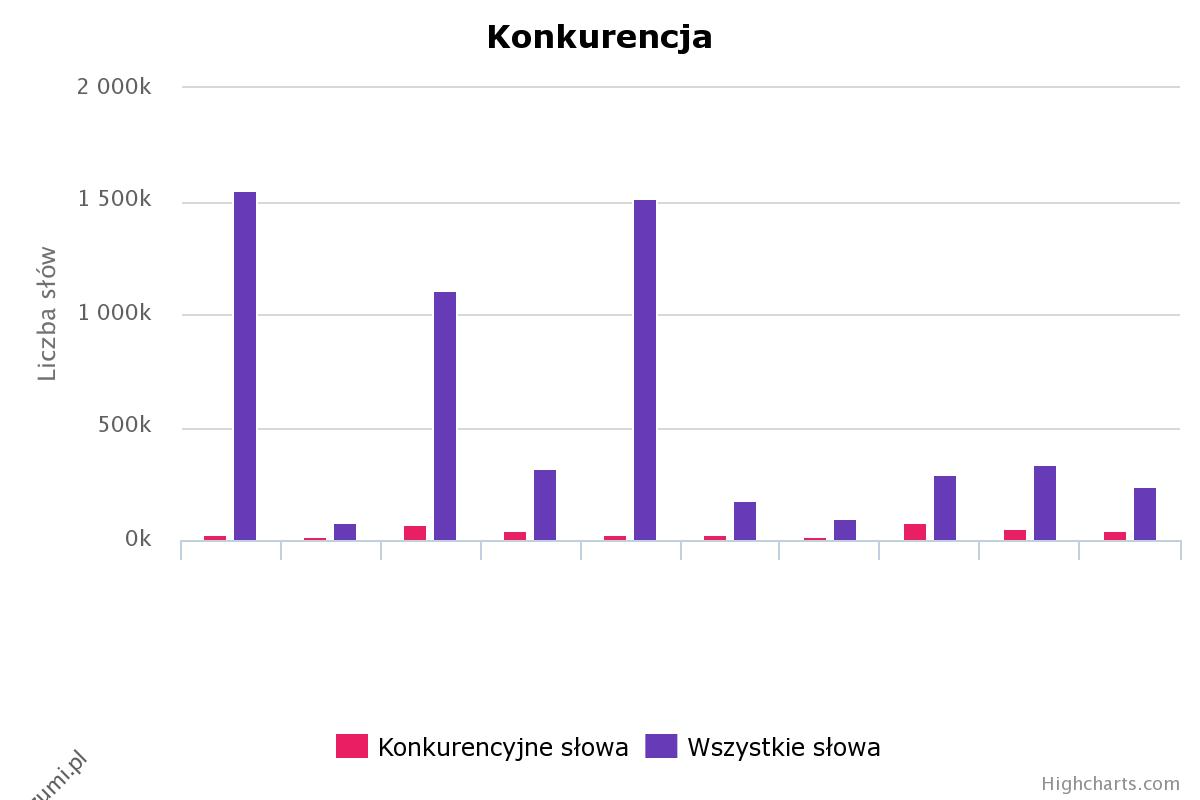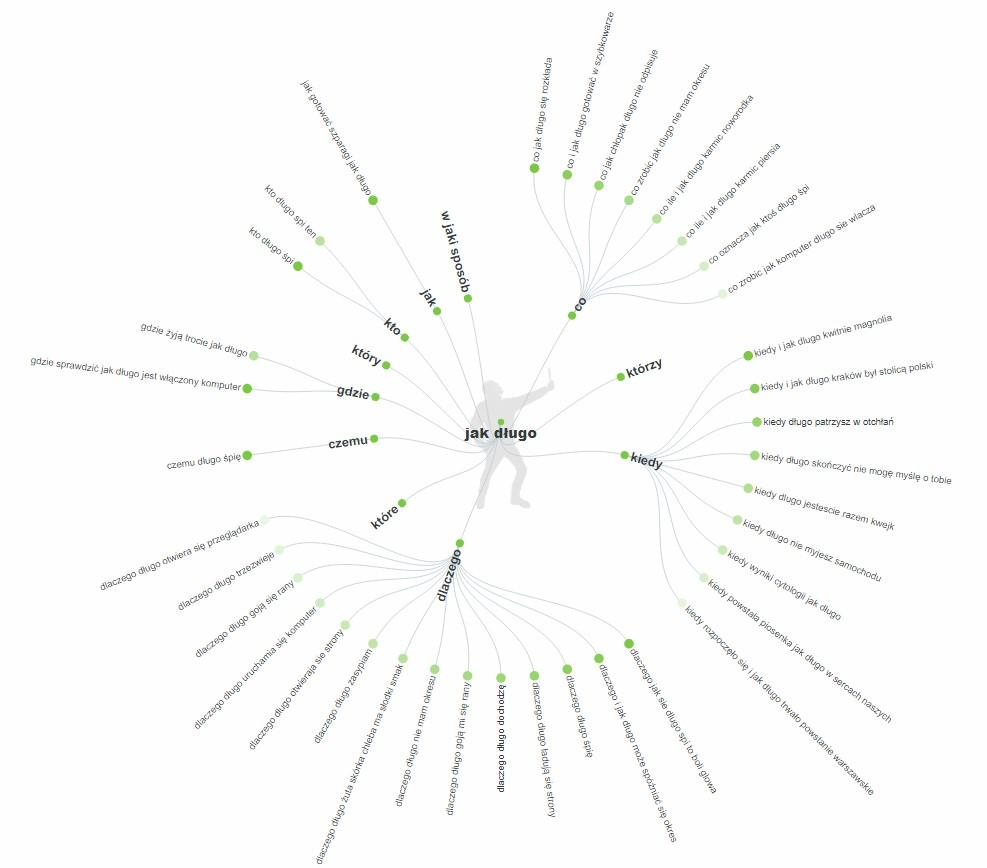Every SEO project consists of several iterative stages. As a rule, we start with the preparation of the goal of our campaign and the selection of appropriate keywords, then we move on to auditing and linking, and then we repeat the various processes to a greater and lesser extent. What is worth knowing about the different stages of work in SEO projects and their looping?.
First: the goal
.
Objective. Three letters – which actually define everything in the case of an SEO campaign. At this stage, we must first of all get to know the customer and his product. It is also important to find out how his campaign has been targeted so far.
Why is it so important to define the target? It is at this stage that we need to verify which of the many scenarios for running an SEO campaign will be relevant to the client and his product. Relevant, that is, it will allow us to properly monetize the traffic.
Campaign goals can vary and will depend on the type of the client’s product.
So let’s go a step further and list some possible SEO campaign goals that we as specialists can suggest to the client.
Potential SEO campaign goals are:.
- .
- improve website visibility,
.
- .
- increase the number of users coming in from organic traffic,
.
- .
- improve the quality of users (e.g., increase the time they stay on the site from organic traffic),
.
- .
- adapting the website to current Google determinants,
.
- .
- getting ahead of the competition,
.
- .
- increase sales,
.
- .
- improve image on the Internet,
.
- .
- reach specific positions for selected keywords
.
- getting traffic to specific sub-pages.
.
These are a few of the most commonly used targets, which are generally worth combining. Remember, however, to pick out the most relevant ones for your client.
Know the enemy! And analyze him as best you can
.
This is the moment that all distinguished spies like the most. At this stage comes the snooping, data gathering, comparisons, analysis and Excel files that need to be properly collated so you know where to start.
Sure, you can use one broad analysis for many projects, but a schematic approach to larger-scale projects won’t work. Poorly collated data can prevent us from achieving our goals.
Here are some elements that will allow us to draw the right conclusions about our project and its demand:
Competition:
.
- service optimization scale
- state of links (quantity, quality, format and acquisition history)
- content marketing – is it being used
- domain age
- history of activities
- visibility
.
.
.
.
.
Project:
.
- current status of the website
- state of optimization or lack thereof
- state of links
- whether the site has adequate content support
- age of domains
- history of promotional activities
- current visibility status
.
.
.
.
.


Once we have such preliminary information, we can quite easily determine our real needs to determine the budget and time to achieve the planned goals. However, it should be remembered that we are working on a “living organism” – a search engine that operates according to constantly changing algorithms. That’s why verification of client and competitor data should be done periodically, e.g. weekly, monthly or quarterly, depending on the size of the campaign and its budget.

Plan:.
At this stage, we should meet with the client again and present to him all the information, which we collected during the analysis. We may also be tempted topresent the KPIs that we will aim for during the project.
It is also worth preparing a framework roadmap – we can also present it to our principal. Preparing such a work calendar will allow us to easily verify the current status of activities and work stages.
What should not be missing from the SEO campaign plan?
.
- .
- analysis and preparation of a suitable keyword cloud
- audit for optimization of the website
- implementation of the audit and its verification
- audit in terms of service merit
- prepare an editorial plan
- audit of links
- getting new links
- reviews
.
.
.
.
.
.
.
.
Keyword cloud
.
Why the cloud? We should review a large number of keywords and determine which ones will work for our client and help meet campaign goals.
When targeting a list of keywords, it’s worth taking a look at the budget. This will help us determine how much we can afford.
It is worth remembering that it is the keywords that should determine our target audience. It’s not always worth blindly believing the numbers, and sometimes a step towards fewer searches can help us significantly in achieving better results.
Never delete archived keyword set data. No one knows the day and hour when you will need this data again. And juxtaposing fresh material with historical data – will speed up your work. Expanding the cloud and changing keywords is one of the most common methods for project changes.
For creating expanded lists of keyword phrases, try the new Senuto > keyword database;.
Onsite activities
.
I will admit that this is my favorite factor that can increase the effectiveness of a campaign very quickly. Site optimization is a very broad topic and even basic changes to sites can make a big difference. However, I encourage you to do complete site audits and based on those audits determine statutes and implementation priorities.
Much can be written about working with IT departments or developers, but it’s important to simply very carefully review each implementation individually. In 2019, we really have a lot of tools that can realistically help us catch errors and problems of services quite quickly – but it is important to remember that none of them can replace a healthy approach and thinking.
However, website optimization is not everything, because much also depends on what our website actually has to offer to users. At many SEO conferences, we see case studies that show how much power valuable content infused into the life of the site is. This allows us to determine the influx and routing of traffic from the long tail on a larger scale. Ultimately, however, this can bring us even more positive effects, such as improving visibility, recognition and credibility of the client’s brand.
And for dessert, links
.
As many linking theories are available on the Internet, so many different kinds of strategies we can use. The question is, which ones make sense?
It’s worth paying special attention to the activities of neighboring search engine sites, which are probably also implementing an SEO campaign. In case our brand is not strong enough for users to spread material about the site on their own, this is a very good and simple way to acquire links.
 .
.
The scale of what links and how many we should acquire must be a reflection of the budget and our real capabilities. Preliminary analysis should give us a lot of information about how the competition is performing and whether we can scale the available budget to meet our goals.
Fortunately, here too we have many tools at our disposal that can realistically help us and speed up certain processes. We can also help here with a fairly strong area of external link acquisition and outsource such activities.
Balances of profit and loss
.
This is a fairly comprehensive thread that should include summaries of plans and implementations and the effects or lack thereof. As a rule, such conclusions are discussed with the client on a monthly basis. However, what is important for us as the person who created the concept and leads the activities – SEO campaigns should be implemented almost every day. Every optimization implementation or gaining a valuable link can have an impact on the goal of our objectives. By meticulously monitoring changes during implementation, we can completely control the project. Some changes are visible almost in real time and we can influence them quite quickly, others take time.
And what does the wheel syndrome have to do with it?
SEO efforts are a constant battle against many factors that actually never let up. The wheel syndrome fits perfectly as the main determinant of an SEO campaign, because every now and then we are required to scale back existing efforts.
Nearly every change requires us to go through the same implementation process, making changes in projects or goals the same steps. Each new analysis requires verification at the scale of our service, competing services and corresponding implementations. We need to properly verify each change and evaluate it after some time.

The Wheel Syndrome – or the stages of work in SEO projects. Summary
Aren’t activities that take place in cycles just boring? It all depends on our approach. New things teach us to catch some anomalies, which over time can strongly develop an analytical approach to SEO activities. Returning to similar solutions is never the same as the first time and almost never works the same way. Subsequent updates require us to be more perceptive and analyze certain facts. Comparing to current determinants, updating the algorithm or verifying even these basic improvements. Therefore, each day in implementing and creating a strategy based on the wheel syndrome is, in a sense, reinventing the wheel.
 Kamil Sroka
Kamil Sroka